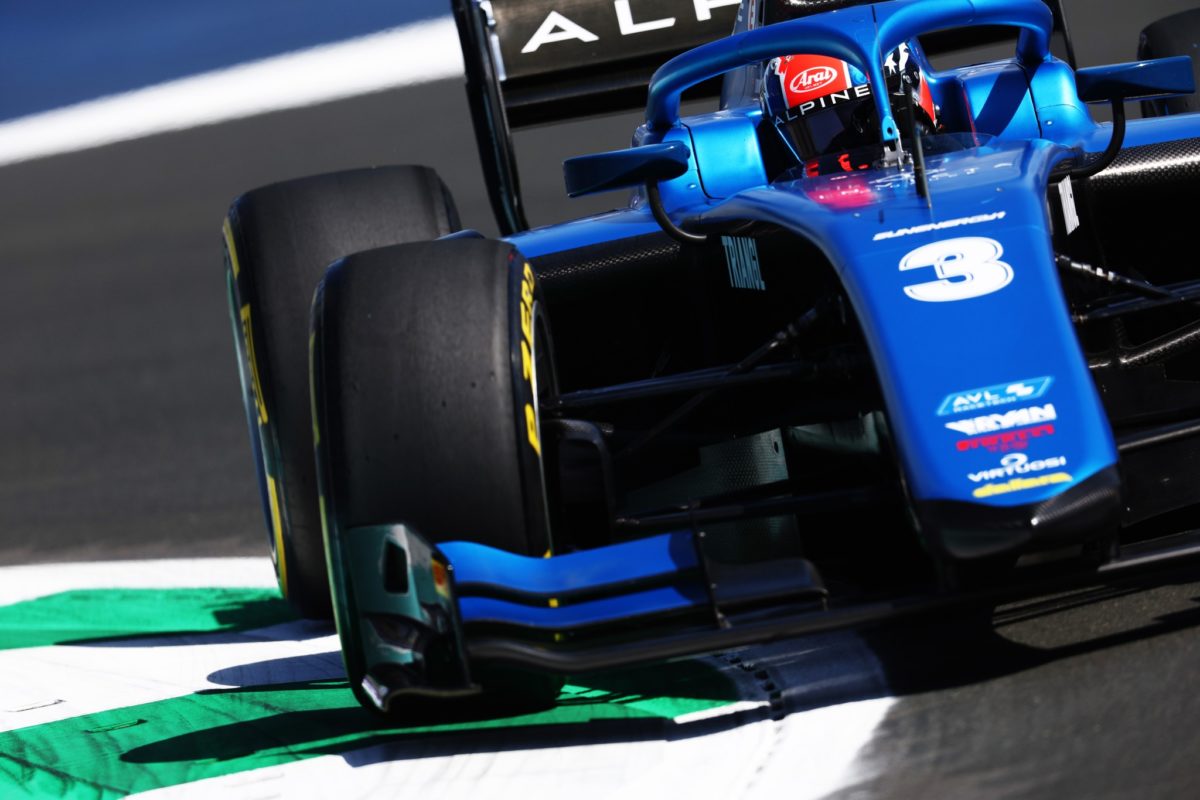

Early development of the next generation of Formula 2 car has begun with officials working on tenders ahead of a potential introduction for 2024.
The current car, the F2 2018, was designed by Dallara and introduced for the 2018 seaosn, as its name would suggest.
It was due to be phased out for 2021, but the outbreak of COVID-19 saw its life extended to the end of 2023 instead.
“We’re planning to introduce a new car because the present cars, whether they’re in Formula 2 or Formula 3, have been lasting quite long, they’re at the end of their cycle; six years old,” category CEO Bruno Michel told Speedcafe.com.
“I think it’s always important that we get a car that is as close as, talking about F2 of course, as close as possible to Formula 1 with a fraction of the cost.
“That is true both in terms of technology, in terms of performance, and of course in terms of look as well.
“So yes, we’re absolutely looking into that at the moment.”
Formula 2 has emerged as the premier feeder class to Formula 1 in recent years, helped by the fact it has a common commercial owner with the sport’s premier category.
The cars use similar Pirelli tyres and race on the same circuits, on grand prix weekends, further strengthening the link between the classes.
There are, however, some key differences both in terms of the car and event format.
On the former, the machinery is predictably less sophisticated and therefore, certainly since being introduced in 2018, a gap has grown between what a Formula 2 car is capable of, and what the latest spec Formula 1 machine can do.
That’s something the current drivers, certainly those who’ve sampled F1 machinery, suggest needs to be addressed – less in terms of the aerodynamic grip but certainly on the mechanics, and specifically the powertrain, of the cars.
“To be honest, I think Formula 2 is a car, how you drive it, it’s in a very good spot,” said Juri Vips when asked by Speedcafe.com about what a new car would need to more closely resemble Formula 1.
Vips has sampled the latest-spec machinery, taking part in Free Practice 1 at the Spanish Grand Prix in place of Sergio Perez for Red Bull.
“The only thing I would say at the moment, an F1 [car] it’s just everything; it’s braking better, it’s more power, more downforce, more group, whatever,” he said.
“But in terms of how you drive it, braking, brake release, how the car feels, it’s quite similar to an F2 car.
“So I think it’s in a very good position for that.
“The only really big difference, when I jump from an F1 car to an F2 car, what I had to get back used to again was the turbo, that really caught me out.”
“Juri made a good point on the turbo,” added Jack Doohan, who has miles in the 2021-spec Alpine A521.
“The turbos especially, you can get some inconsistency and, unfortunately, that’s just how the manufacturing is.
“So regardless of the actual feeling, I think as well as cancelling that out would be a good thing, and just to get a little bit more reality and closer to Formula 1.”
Vips then added: “F1 has a turbo as well, but there’s just like the lag you have in an F1 is almost… doesn’t basically exist.
“In F2, it’s a lot, so that’s quite a big difference between the cars.”
There is some appetite to mimic on a smaller scale the path Formula 1 has followed, the focus will be on achieving performance within specific constraints while ensuring the aesthetics are on brand going forward.
“We’re looking at it, it’s very interesting because Formula 1 has been doing quite a lot of studies on this subject,” Michel explained, noting F1’s move to ground effects this season.
“So we’re working also closely with the Formula 1 aerodynamicist to have information on their findings, because there are things that we will be able to adapt, and there are things that we won’t because, as I said, it has to be a fraction of the cost.
“The other thing as well, that I always say, is that we today have cars that are producing fantastic racing already, and they can follow each other extremely well.
“So we don’t need to have a revolution in terms of performance of the cars on track.
“But also in the same time we need to look at when we do a new car is all the safety devices that the FIA is coming up with and that we need to adapt to our cars.
“That’s also a reason to do a car regularly, because in terms of safety, we have also to follow the evolutions that the FIA is doing for Formula 1.”






















Discussion about this post